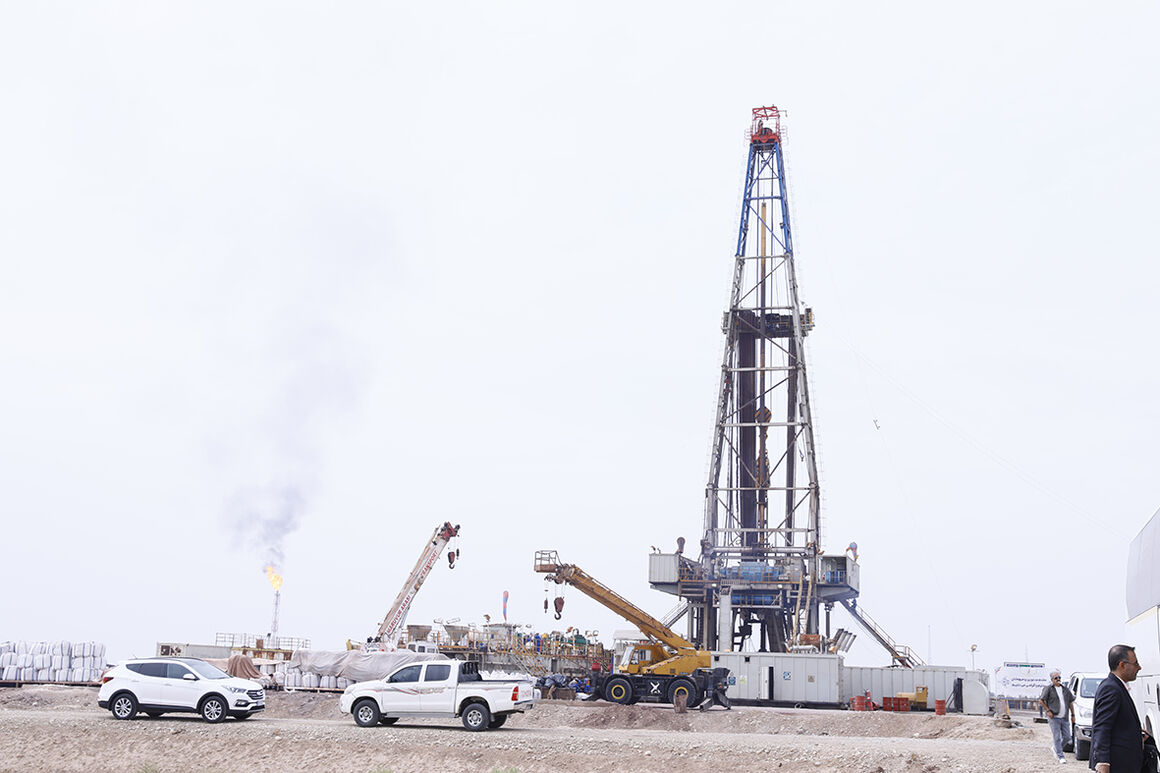There are 11 oil fields in the West Karoun cluster, holding 67 billion barrels of oil in place. Azadegan, Yaran, and Yadavaran are jointly owned fields. They contain heavy crude oil and have started production in recent years. Sepehr and Jofeir are independent fields in the same area. The latest Platts survey by S&P Global Commodity Insights indicates that Iran produced 3.05 mb/d of oil in October, reaching five-year highs.
Iran shares at least 28 oil and gas fields with neighboring countries. The oil fields in West Karoun are known as green fields, which start from the city of Ahvaz and extend as far away as Iran’s border strip. The West Karoun area comprises two oil zones: Azadegan (North Azadegan, South Azadegan, North Yaran, South Yaran) and Yadavaran (Koushk and Hosseinieh). National Iranian Oil Company (NIOC) hopes to bring production from the West Karoun cluster of oil fields to 1 mb/d. Due to US sanctions, Iran does not reveal oil production data; however, there is evidence of growing production from joint fields.
What matters now is that independent fields are being prioritized for development.
Iran’s petroleum industry has been facing financial strain due to sanctions, but it has not been kept from planning to develop its oil and gas fields.
Two years ago, the Ministry of Petroleum focused on developing independent fields in a bid to respond to new demand. The fields have been assigned to local contractors to be developed.
NIOC signed an IPC deal with PEDC in March 2018 for the integrated development of Sepehr and Jofeir to reach 110 tb/d of oil, which would total 512 million barrels after 20 years. The project’s direct CAPEX is about $2.427 billion with indirect capex at $413 million. The three-phase contract would see 135 wells be drilled. In Phase 1, production would reach 36 tb/d from 12 wells, 11 of which have so far been spudded. The 12th well is in its final stage.
PEDC experts say the wells spudded in the Fahlyan layer and the depth of 4,600 meters with 10,000 psi pressure have struck oil. Due to the high pressure of this oil reservoir, it was impossible to use ordinary wellhead equipment. Therefore, for the first time in the country, well-completion equipment was manufactured locally. According to the latest reports, over 60,000 meters of drilling has been done in these fields as five drilling rigs are operational.
The duration needed for drilling has been down from 330 to 90 days in the deepest wells. An official has said one of the most challenging and deepest oil layers in West Karoun lies in Sepehr and Jofeir. A key point is that oil production from the wells drilled in Sepehr and Jofeir has increased, which would change recoverable oil estimates for these fields.
The development of Sepehr and Jofeir is indicative of the high expertise of Iranians in oil development, Iranian E&P companies can develop oil and gas fields, either on their own or in partnership with foreign companies.
The development of Azadegan, Yadavaran, and Yaran have been prioritized by NIOC as they are jointly owned by other nations. Talks have been held over the past two years to enhance production from West Karoun.
Azadegan is specifically important for NIOC as it is the largest oil field Iran shares with Iraq. NIOC decided to develop Azadegan entirely. Six banks, the National Development Fund of Iran (NDFI), and six E&P companies are engaged.
Azadegan is being developed with a $7 billion investment to produce 570 tb/d of oil. Enhanced recovery by water injection is envisaged. The contract for its development has been signed for a seven-year period, which may be extended up to 20 years.
Furthermore, a catchup plan has been presented to compensate for the delay in production from this joint field. In parallel, 60 new wells have been drilled in South Azadegan over the past two years, leading to a 65 tb/d output hike. Over two decades, 100 wells had been drilled in Azadegan, while since the 13th administration took office, 60 wells have been drilled. Thirty-eight wells are still to be drilled.
South Azadegan would have a total of 206 wells, including 201 wells for oil production and 5 wells for waste disposal. The oil produced from these wells is gathered in 10 manifolds to be separated at two separation units.
The first exploration well was drilled in this oil field in 1976, but the second well in 1999 revealed the huge reserves there. Due to the extent of the Azadegan field, its development was divided into northern and southern sections. But NIOC recently decided to develop the field as a whole.
Phase 1 development of North Azadegan has become operational with 75 tb/d output from 58 wells. Phase 1 development of South Azadegan would see a total of 201 wells producing oil. Azadegan is estimated to hold 27 billion barrels of oil in place.
Azadegan is the third largest oil field in the world, only behind a Saudi and a Kuwaiti field. South Azadegan is estimated to hold 25.6 billion barrels of oil in place.
Yadavaran which is shared with Iraq, located near Sepehr and Jofeir, is highly attractive to investors. Yadavaran is estimated to hold 17 billion barrels of oil in place, 3 billion barrels of which is recoverable.
Yadavaran is to be developed in three phases. Phase 1 should reach 85 tb/d of oil, but current data shows higher output. Phase 2 targets 180 tb/d and Phase 3 300 tb/d. Phase 1 had been developed by a Chinese contractor. Talks are underway for the second phase of development of this field.
Iran Petroleum


Your Comment